
© 2010-2023 by Fine Arts of the Southwest, Inc. All rights reserved.
Unauthorized reproduction or use is strictly prohibited by law.
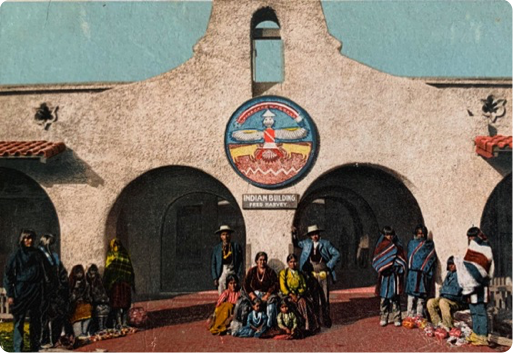
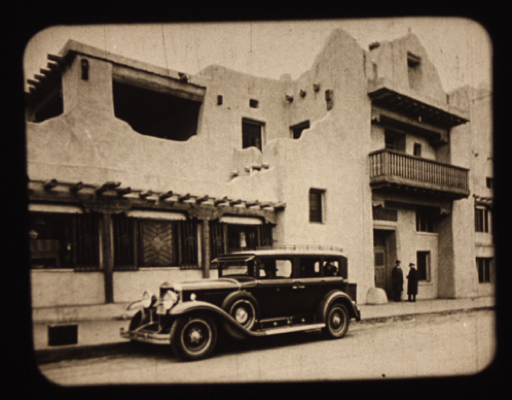
Several of the places where this pottery jar might have been sold. At upper left, La Fonda Hotel, Santa Fe, c. 1920's. At upper right, The Indian Building at the Hotel Alvarado in Albuquerque, c. 1910. Above center, The Hotel Castaneda in Las Vegas, New Mexico pictured in a 1906 Fred Harvey postcard.
All photo sources and © The Fred Harvey Company

An exceptional historic Zia Pueblo, New Mexico 4-color polychrome pottery “olla” or water jar with bird pictorials and beautiful Ethnographic wear, c. 1910-1920
This outstanding jar is quite simply everything one could ever ask for or properly desire in a piece of historic Pueblo pottery; exceptional artistic beauty and technical refinement, a high degree of rarity, remarkable authenticity and completely original untouched condition with lovely and well-loved Native use and wear in evidence. Since the day this jar left Zia Pueblo sometime earlier in the 20th Century it has remained completely untouched and un-messed with, it has never seen a restorer’s workshop or repair bench as it has not needed to. This is at once a fine and completely authentic historic gem, a bit of a true time warp and an artistic tour de force wrapped up in a single very attractive package. Can’t ask for much more that that. It’s the sort of piece that gives judges at The Antiques Roadshow a heart attack.
The old Keresan Pueblo of Zia (Tsi-Yeh), some 35 miles northwest of present-day Albuquerque, New Mexico was founded by refugee migrants of the Four Corners Anasazi people in the 13th Century A.D. some five hundred years before the United States Declaration of Independence. The historic pottery which has been made there for centuries was the pride of Zia Pueblo and was renowned, traded and eagerly sought after throughout the entire Pueblo, Hispanic and Anglo worlds of
the Southwest and is now highly revered by enthusiastic modern-day collectors and Museums around the world.
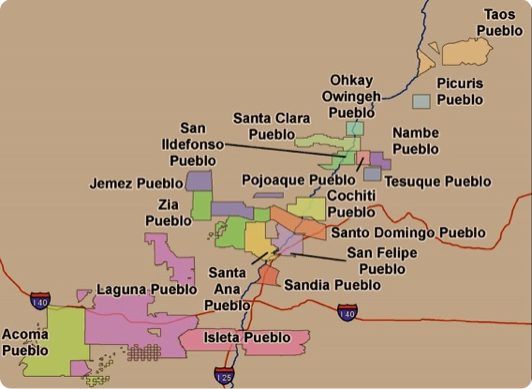
At the bottom of the design field can be seen the characteristic late 19th and early 20th Century Zia circular red-banding around the lower section of the jar, in this case the red banding is relatively wider indicting a date early in the 20th Century. After this period, the red banding grew progressively thinner until dying out completely by about 1925. The jar has the appropriate for this early time period indented or “kick-up” style concave bottom made for carrying on the head in the customary age-old Pueblo manner as seen in the historic photograph above.
The jar’s condition is remarkable completely “just-off-the-Pueblo” original with no cracks, no significant chips and a thorough examination of the vessel under Ultraviolet light reveals no evidence of restoration or overpainting anywhere on the jar. Around the vessel’s rim, there is a considerable amount of dedicated ladle wearing evidence from a ceramic or metal ladle used to dispense water from the jar. Such Pueblo water jars are always kept in a cool, shady place in the home and form an early period water dispenser if you will where anyone can come and dip a ladle or two full. We can personally well attest that water always tastes sweeter and more delicious when it is served nice and cool from a historic Pueblo olla or water jar such as this one.
At left, present-day map of the location of New Mexico Pueblos. At right, historic photograph of Zia Pueblo, New Mexico by John K. Hillers, c. 1890.
Left photo source and © U.S. Bureau of Reclamation, Washington, D.C. Right photo source and © Legends of America.
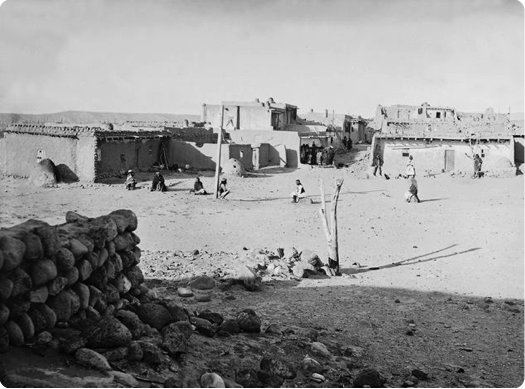
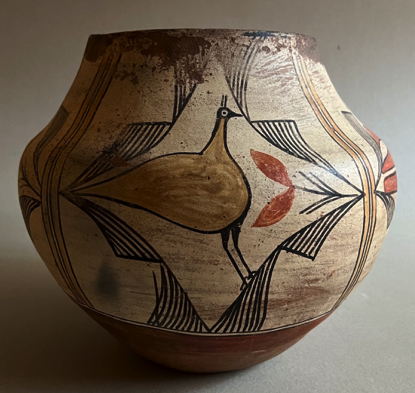
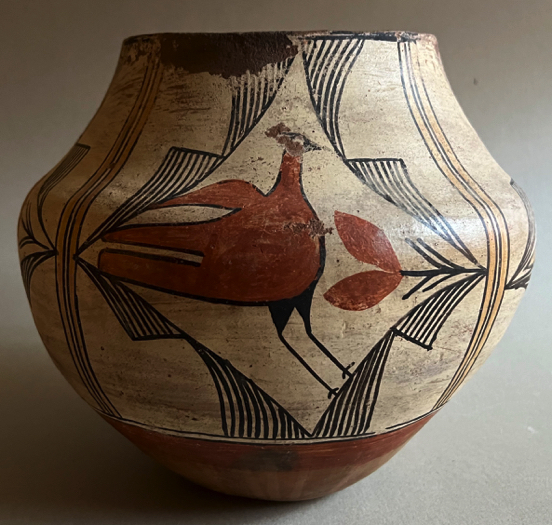
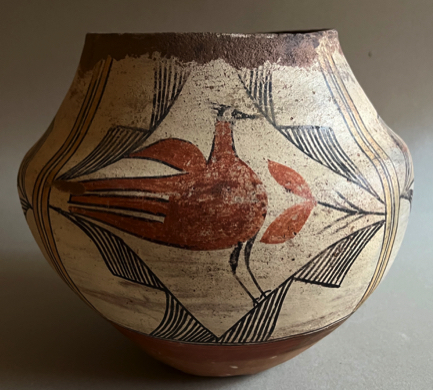
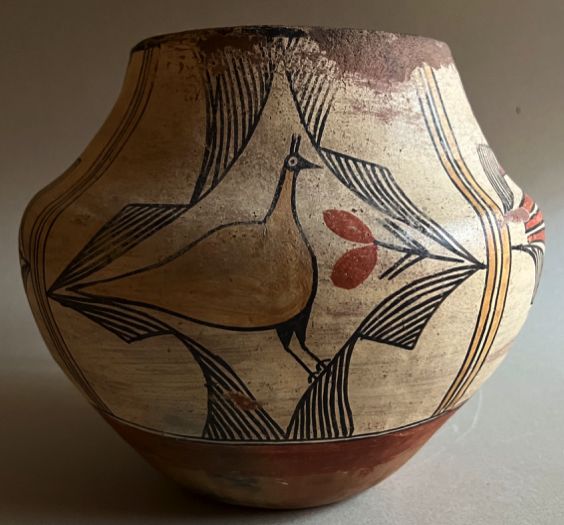
The area around Zia Pueblo was blessed with abundant high-quality clay deposits and plentiful black basalt tempering
sand from the nearby Jemez River and the construction of this wonderful jar is completely characteristic of early 20th Century Zia Pueblo pottery is every pssible way; it was paintsakingly constructed of locally sourced hand-coiled red-orange Zia clay tempered with locally found ground black volcanic basalt rock. The vessel’s walls are even, symmetrical and extremely gracefully formed giving the vessel a distinct lightness in appearance and feel. The stone polishing of the vessel is similarly remarkable. Overall, the jar is most beautifully shaped, potted and fired, very symmetrical and thin-walled and it pings beautifully and clearly when tapped lightly on the shoulder with a finger.
The upper two-thirds of the jar contain the design field which is interestingly and uniquely painted in a four color, as opposed to the usual three-color polychrome design, with black, pumpkin yellow and reddish orange paints used upon a
rag wiped white background slip. The design field is divided into four equidistant diamond-shaped panels or “houses” around the central body of the jar which are all rendered in finely-hachure black paint outlining surrounds, each of
which surrounds a beautifully painted profiled bird figure, two of which are painted in red and two of which are painted
in pumpkin yellow. The four bird “houses” are further divided by vertical twin parallel painted panels in pumpkin yellow bordered in black which descend from the jar’s rim to the bottom of the design field. The overall presentation here is
at once symmetrical and completely masterful.
Zia Pueblo street scene by Edward S. Curtis, 1924.
Photo source and © Legends of America.
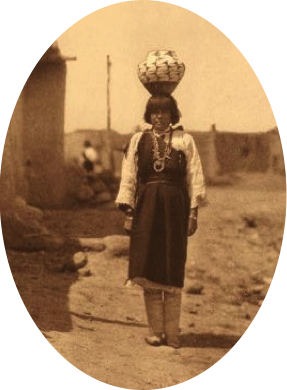
There are two further questions, that of possible artistic attribution and of historic provenance. Regarding attribution, Zia pottery scholars Francis H. Harlow and Dwight P. Lanmon in their masterful study “The Pottery of Zia Pueblo” (School of American Research Press, Santa Fe, 2003) indicate some examples similar to this jar done by unidentified Zia potters. These examples can be seen on pages 104 and 119 and are pictured below. The jar does bear distinct similarities to the ourstanding work of distinguished historic Zia potter, Trinidad Medina (1884-1969), but not enough to make a completely positive attribution.
As for the jar’s possible passage through history upon leaving Zia Pueblo, this jar could have very possibly been purchased directly at the Pueblo by an early intrepid collector such as Ethnologist Leslie White or Matilda Cox Stevenson, New Mexico artist Andrew Dasuburg or Santa Fe art benefactors Amelia and Elizabeth White. It could just as possibly have been purchased from a nearby local trading post where a Zia Pueblo person might have brought it in to sell or trade. The old trading post in the nearby town of Bernaillillo is a likely candidate here as is the Famous Fred Harvey Indian Building at Albuquerque’s old downtown Hotel Alvarado where native potters and their families came frequently to trade or sell their pieces. The Fred Harvey Company's La Fonda Hotel in Santa Fe and The Hotel Castanaeda in Las Vegas, NM are also likely possible sales locations.
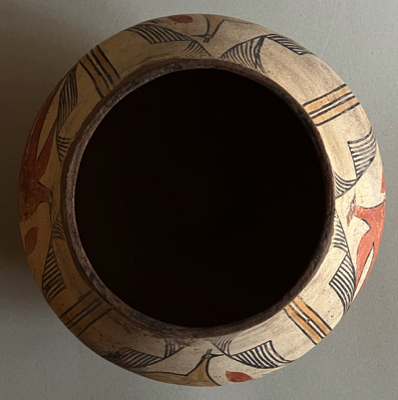
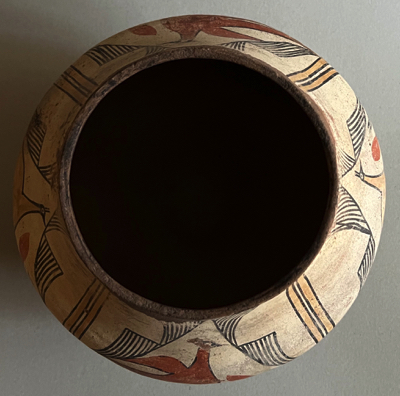
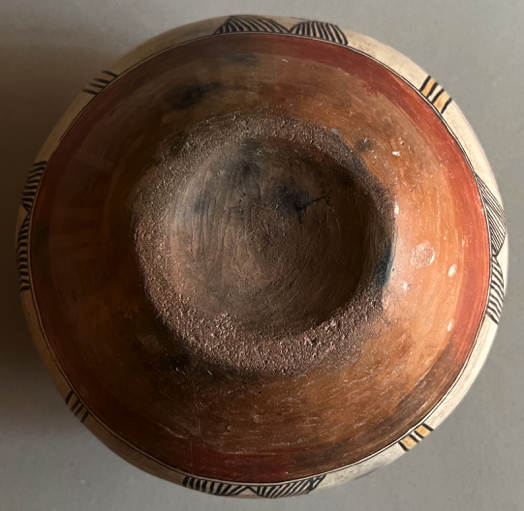
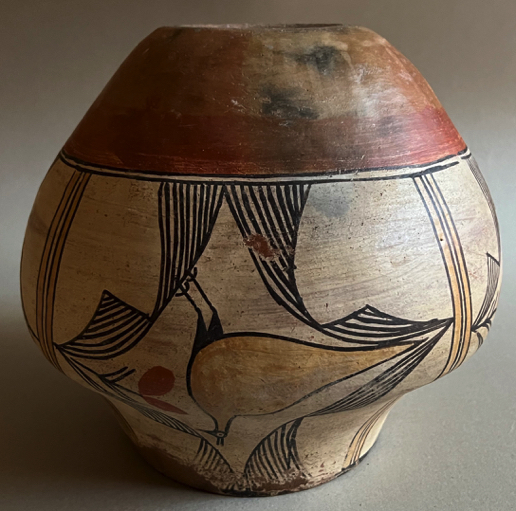
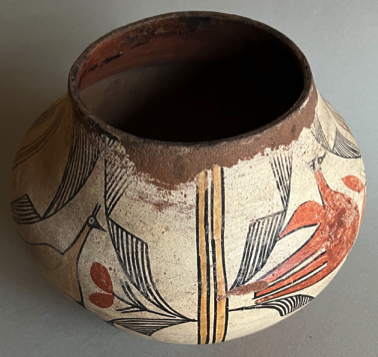
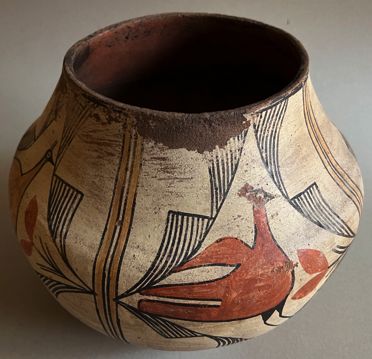
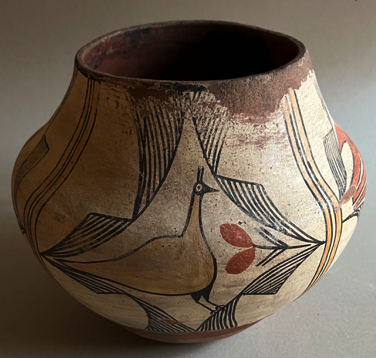
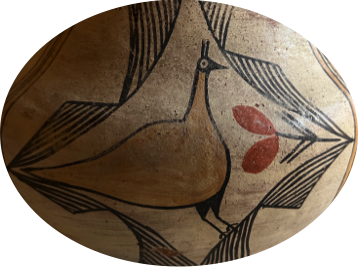
The jar measures a very nicely and typically sized 9” in height and it is 10” in diameter. It is in excellent original, totally untouched Ethnographic condition just exactly as it originally left the Pueblo where it clearly saw regular and constant Native use as an “olla” or water jar as evidenced by the immediately recognizable characteristic pattern of ladle wear abrasion around the neck and rim.
This outstanding jar is a “rara avis” or “rare bird” indeed, a beautiful piece of historic art and culture captured in
perfect completely undisturbed native condition looking every bit exactly the same as the day it was last used at Zia Pueblo, precisely as it should be. An object of complete beauty and amazing originality, history, rarity and desirability.
The jar is ready to thrill its next very fortunate owner, the next step is up to you.
Price $7,650
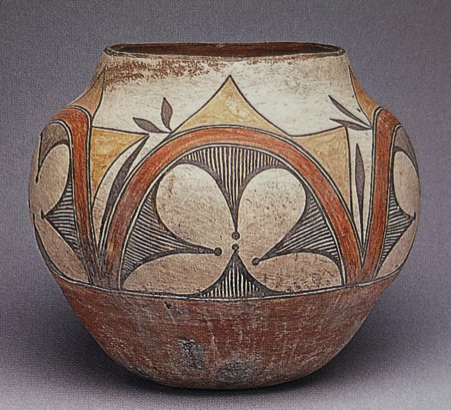
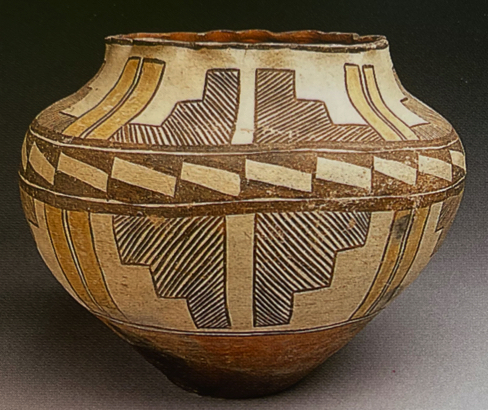
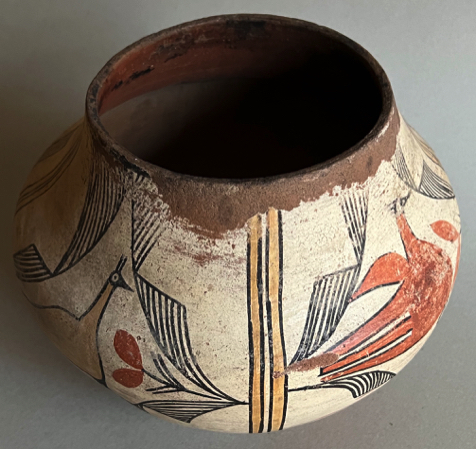
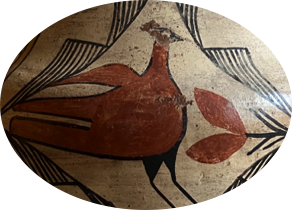
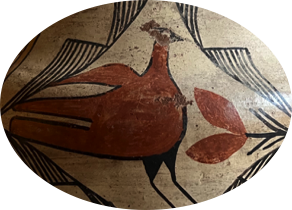
Two slightly later Zia Pueblo Four-Color pottery ollas, c. 1920-1930, by unidentified potters similar to the jar listed here and pictured in Francis H. Harlow's and Dwight P. Lanmon's "Pottery of Zia Pueblo", School of American Research Press, Santa Fe, 2003, pp. 104 and 119.